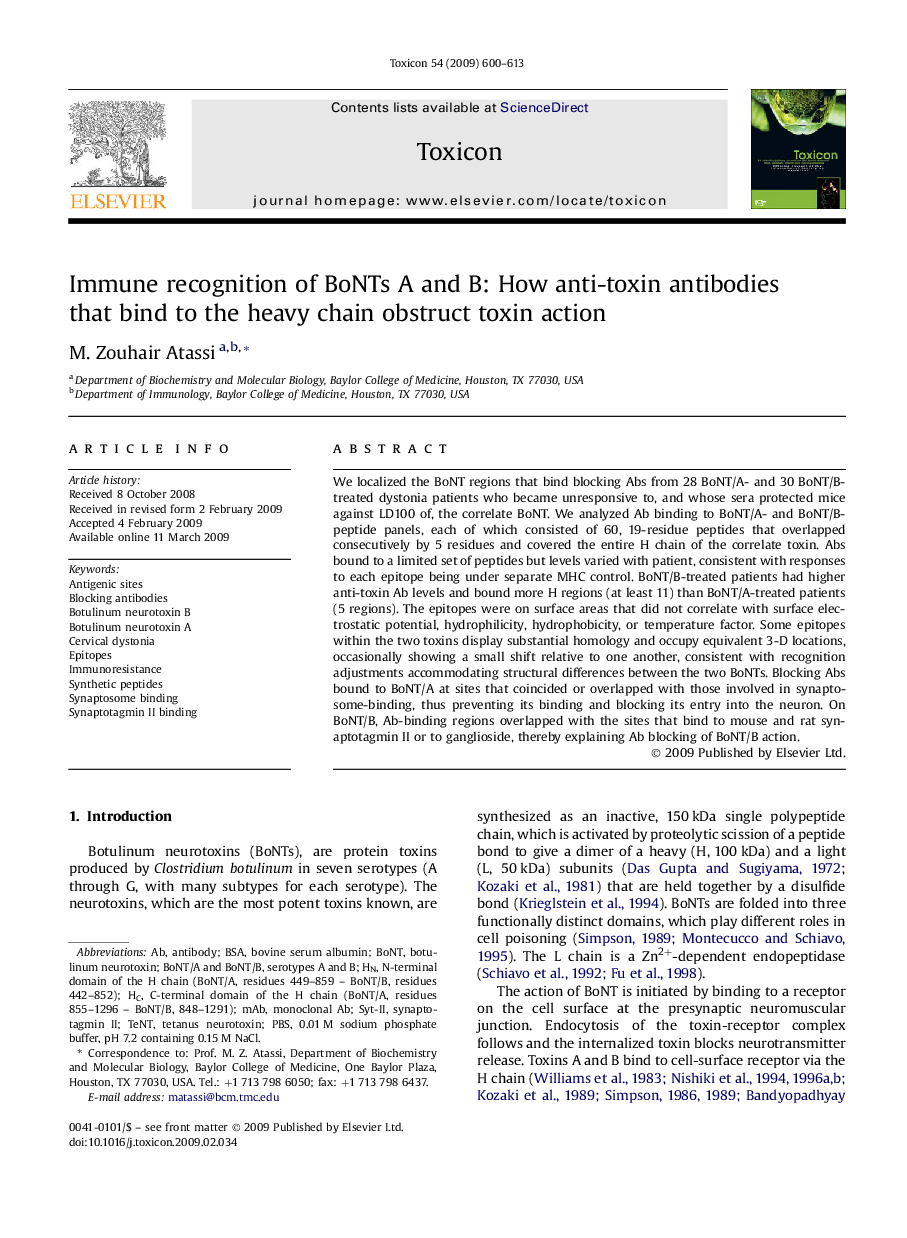| Article ID | Journal | Published Year | Pages | File Type |
|---|---|---|---|---|
| 2065806 | Toxicon | 2009 | 14 Pages |
We localized the BoNT regions that bind blocking Abs from 28 BoNT/A- and 30 BoNT/B-treated dystonia patients who became unresponsive to, and whose sera protected mice against LD100 of, the correlate BoNT. We analyzed Ab binding to BoNT/A- and BoNT/B-peptide panels, each of which consisted of 60, 19-residue peptides that overlapped consecutively by 5 residues and covered the entire H chain of the correlate toxin. Abs bound to a limited set of peptides but levels varied with patient, consistent with responses to each epitope being under separate MHC control. BoNT/B-treated patients had higher anti-toxin Ab levels and bound more H regions (at least 11) than BoNT/A-treated patients (5 regions). The epitopes were on surface areas that did not correlate with surface electrostatic potential, hydrophilicity, hydrophobicity, or temperature factor. Some epitopes within the two toxins display substantial homology and occupy equivalent 3-D locations, occasionally showing a small shift relative to one another, consistent with recognition adjustments accommodating structural differences between the two BoNTs. Blocking Abs bound to BoNT/A at sites that coincided or overlapped with those involved in synaptosome-binding, thus preventing its binding and blocking its entry into the neuron. On BoNT/B, Ab-binding regions overlapped with the sites that bind to mouse and rat synaptotagmin II or to ganglioside, thereby explaining Ab blocking of BoNT/B action.
